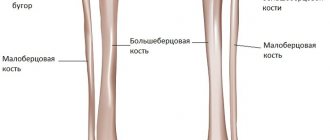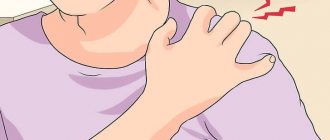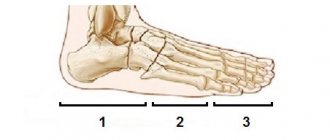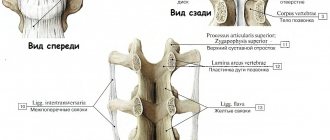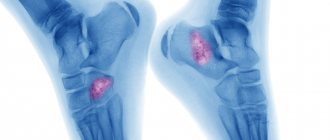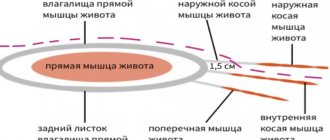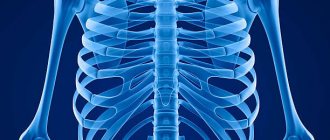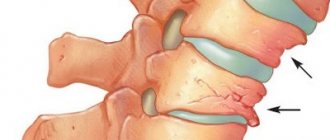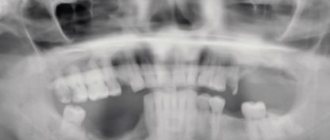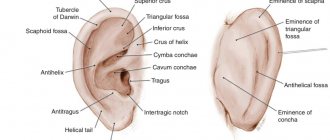The radius is the bone in the forearm of the hand. It starts at the elbow and continues to the wrist. Its lower part, which connects to the brush, is thinner. This area is called the "typical site" because about 16% of all human skeletal injuries occur there. Typically, damage in this area is the result of a fall.
Most people are right-handed. When they lose balance, they reflexively extend their right arm in search of support. Accordingly, a radial fracture in a typical location is more common on the right side.
Smith's fracture
Smith's Fracture is a flexion fracture of the radius. It happens when a person falls with emphasis on the back of the hand, bent towards itself, or when hit with a hand, when the force falls on this part of the bent hand. With this effect, the distal element of the bone is displaced towards the outer surface.
Characteristic features:
- damage to the surface of the palm;
- displacement of the radial fragment to the palmar side;
- simultaneous displacement of the wrist bones;
- slight outer bend of the hand.
Colles' fracture
The Colles fracture, or rather Pouteau-Colles (Fracture Pouteau - Colles), is similar to the previous type, but it involves an extensor fracture of the radius. It is observed when falling on a hand resting on the outer part of the open palm, excessive bending of the wrist joint under its own weight, or during a strong blow of a similar direction.
The fracture site in this case is 2–3 cm higher than with a Smith fracture. The main signs are: displacement of the radial bone fragment in the dorsal direction, which leads to a specific deformation of the wrist joint; Often this type of injury is accompanied by a fracture of the styloid process of the ulna. In elderly people, fragmentation of the distal radial element and the fracture line entering the carpal articular surface are often detected.
Diet
Diet for fractures
- Efficacy: therapeutic effect after a month
- Timeframe: 2 months
- Cost of food: 1600-1800 rubles per week
Throughout bone fusion, dietary nutrition is indicated, the main task of which is to accelerate the fusion process. The diet for fractures should contain animal protein in an amount of about 100 g/day, which includes amino acids involved in the formation of bone tissue ( arginine , lysine , glutamine , proline , glycine , cystine ). The main products containing animal protein are dietary red meats, chicken, fish, chicken eggs, cottage cheese and dairy products.
Calcium, magnesium, phosphorus and zinc play a vital role in the formation of bone tissue, so the diet should include foods containing these elements. Sources of calcium are dairy products (cottage cheese/cheese), milk, fermented milk products, hazelnuts, lettuce, sesame seeds, spinach. It should be taken into account that for effective absorption of calcium, the diet must contain foods rich in vitamin D (fish oil/fatty sea fish).
The main sources of organic phosphorus compounds are meat, fish, milk, beef liver, beans, yolk, sturgeon caviar, walnuts, buckwheat/oatmeal, and dairy products. The required amount of magnesium in the body will be ensured by the inclusion in the diet of such products as wholemeal products, legumes, wheat, oatmeal and buckwheat (kernels), hazelnuts, milk powder, bananas, coffee beans, almonds.
And zinc is rich in bran, yeast, legumes, seafood, cereal grains, beef, dairy products, mushrooms, cocoa, sesame seeds, pumpkin seeds, peanuts, sunflower seeds, potatoes, onions.
B vitamins in the diet ; D ; WITH ; A , E , which are catalysts for the reactions necessary for the healing of fractures. Thus, vitamin D from fish oil, chicken yolk, fatty sea fish (sprats); vitamin C is found in rose hips, sea buckthorn, fruits/berries; group vitamins in offal (kidneys, pork/beef liver), cereals, walnuts, sweet peppers, hazelnuts, milk, yeast, garlic; vitamin E - in cold-pressed vegetable oils. A fracture of the radius heals on average in 27-35 days, and throughout this entire period, as well as for another 1-2 months, you must follow a diet.
Radial fracture with and without displacement
According to the clinical picture, radial bone fractures are divided into 2 types:
- With offset. In this case, the broken bone elements are displaced relative to each other. The direction of the displacement may be different. Transverse and longitudinal displacements are most often recorded. As a rule, a transverse or oblique fracture line of the radius can be seen on the radiograph immediately after the fracture. Then, the muscles that are attached to these fragments, when contracting, displace them. Much less common is an impacted fracture, where one broken part penetrates into another part of the bone. A displaced fracture is characterized by a noticeable change in the shape of the hand in the form of a typical deformity.
- Without displacement or incomplete. With it, muscle strength is not enough to displace bone fragments. A typical option is a crack in the bone. The main signs are swelling of the injury site and severe pain, deformation and dysfunction of the injured limb.
Important! Even by external examination, it is most often possible to classify the fracture. A more accurate diagnosis is made after radiography.
ORTHOPEDIST-TRAUMOTOLOGIST
Pathogenesis
The pathogenesis of a pathological fracture is based on quantitative/structural changes in bone tissue, which significantly reduce bone strength. These include a decrease in bone mass and, as a consequence, a decrease in the mechanical strength of the bone and structural changes - disturbances in the microarchitecture of the trabeculae, an increase in the porosity of the cortical bone and the accumulation of trabecular microfractures, which directly affects the strength of the bone, regardless of its mass. Thus, the pathogenesis of pathological fractures involves a significant decrease in bone mass per unit volume and a violation of the strength/structural characteristics of bone tissue.
Open and closed fracture
Based on damage to tissue and skin, the following types of fractures are distinguished:
- Closed type. The integrity of the skin is not compromised, and bone fragments do not come out. For the victim, this type of injury is the most favorable, since infection and contamination are excluded, and the likelihood of dangerous complications is reduced.
- Open type. A broken bone, moving, damages soft tissues and skin. There is direct contact of the damaged area with the external environment. In this case, pathogenic microorganisms enter the open wound along with dirt, significantly increasing the risk of infection.
Diagnostics
Most fractures are accompanied by severe symptoms - pain, swelling, displacement of a bone fragment, and the presence of a hematoma. However, X-rays are always ordered to confirm the type of injury. This diagnostic method is considered the most accessible and widespread.
In severe cases, traumatologists may refer the patient for a computed tomography or magnetic resonance imaging scan. These methods are mainly used to assess combined injuries, as well as before and after surgery.
How are radius fractures treated?
For proper fusion of bones, the doctor must precisely bring the fragments together along the fracture line. It is important to ensure complete contact between them so that there is no gap.
The next prerequisite for successful rehabilitation is complete immobilization of the damaged area (immobilization). For this, various fixing structures are used: plaster casts, orthoses.
To make sure that the comparison of fragments is correct, a repeat x-ray is taken. Restoring the integrity of the radius bone in a typical location most often occurs without surgery. The exception is complex cases when severe damage to bones and nearby tissues has occurred. The patient is sent for hospitalization to the trauma department.
To prevent complications, you must follow your doctor's recommendations. If drug therapy is indicated, medications should be taken according to the treatment plan. This will help relieve inflammation and speed up the healing process.
Don't forget about your diet. The diet should be balanced, high in calcium and vitamin D. A healthy lifestyle and following safety rules are the best way to prevent injury.
Because there are many types of distal radius fractures and many ways to treat them, the recovery period will vary from patient to patient. You can get more detailed information about this from your doctor.
Pain treatment
Pain from most fractures lasts from several days to a couple of weeks. Many patients easily cope with their pain with local ice applications, elevating the limb, and the simplest over-the-counter medications.
Your doctor may recommend that you combine ibuprofen and paracetamol. In combination with each other they are much more effective than individually.
Care of the plaster cast and wound
In some cases, the original plaster cast is relaxed and replaced with a new one as swelling decreases. The latter is removed 6 weeks after the injury.
The plaster cast should not be exposed to moisture during treatment. When you shower, it must be covered with a plastic bag. Once wet, the plaster takes a long time to dry. If this happens, we recommend using a hair dryer.
Most surgical wounds should also not be kept wet for the first 5 days after surgery or until the stitches are removed, whichever comes first.
Possible complications
After surgery or after applying a cast, it is necessary to restore finger movements as quickly as possible. If you are unable to move your fingers normally after 24 hours due to severe pain or swelling, consult your doctor.
In such a situation, the doctor may loosen the cast or post-operative dressing. In some cases, sessions with a physical therapist are necessary to restore full function.
Pain that cannot be controlled by standard means may be a sign of complex regional pain syndrome (reflex sympathetic dystrophy), which must be treated as quickly and aggressively as possible using medications and blockades.
Rehabilitation and return to daily activities
Most patients with distal radius fractures return to their daily activities without problems. When this happens depends on the type of fracture, the nature of the treatment, and the body's response to the treatment.
Almost all patients will continue to have some wrist joint stiffness. It usually decreases 1-2 months after the cast is removed or after surgery and then continues to decrease for another 2 years after the injury. If necessary, your doctor will refer you to a physical therapist a few days or weeks after surgery or immediately after the cast is removed.
Most patients can resume light physical activity, such as swimming or lower-body gym workouts, 1 to 2 months after the cast is removed or 1 to 2 months after surgery. Intense physical activity, such as skiing or football, can be resumed 3-6 months after surgery.
Long-term results
Full recovery usually takes at least 6 months.
During the first year after injury, some pain with activity usually persists, and sometimes it may persist longer or permanently, especially in high-energy injuries, patients aged 50 years, or patients with underlying osteoarthritis of the wrist. Stiffness is usually minimal and does not affect the overall function of the limb.
One of the causes of fractures of the distal end of the radius is osteoporosis. Patients with such fractures are considered to be evaluated for this disease, especially if they have other risk factors for osteoporosis. You can talk to your doctor about this issue in more detail.
Treatment with orthoses
ORDEKT orthoses are designed specifically for comfortable recovery after injuries to ligaments, tendons, muscle tissue, bone fractures, and rehabilitation after surgical treatment. You can learn about all the advantages of ORDEKT products made from low-temperature plastic on our website. If you have any questions, write us a message in the feedback form or call 8 800 500 8333. Our specialists will help you choose the ideal model for you.
Almost every sixth bone fracture in the human body is a fracture of the radius in a typical location. The method of treatment and rehabilitation of such injuries has been sufficiently developed. It is important to make a timely and correct diagnosis, differentiate the type of damage, and immediately begin treatment.
The article was checked by Strakhov Maxim Alekseevich - Candidate of Medical Sciences, Associate Professor of the Department of Traumatology-Orthopedics and Military Field Surgery of the Federal State Autonomous Educational Institution of Higher Education Russian National Research Medical University named after. N.I. Pirogov of the Ministry of Health of Russia, Associate Professor of the Department of Traumatology and Orthopedics of the Federal State Budgetary Institution Federal Scientific and Clinical Center of the Federal Medical and Biological Agency of Russia (Moscow).
Treatment (conservative, surgical)
There are two treatment options:
Conservative. It is used for simple fractures, without fragments or displacements. The patient is given a plaster cast, and the arm heals under it on its own. Sometimes conservative treatment is used to restore fragments and displacement. The procedure may fail and the limb may become deformed over time. The entire treatment takes from 4 to 6 weeks plus a rehabilitation period.
Operational. It is carried out under anesthesia, cutting the arm and restoring the anatomical structure of the bone. The fragments are fixed with special titanium plates and screws. Transosseous osteosynthesis according to Ilizarov is also performed, and a special fixation apparatus is used to restore the arm. At the Laditsen Medical Center, the operation is performed using Dr. Veklich’s improved design, without the use of traumatic needles. After the operation, you do not need to wear a cast, just an elbow bandage. Recovery occurs faster, and the patient returns to his usual lifestyle.
